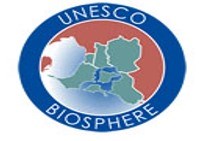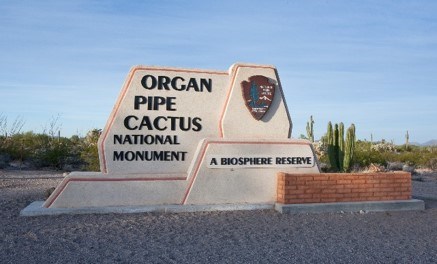

Man and the Biosphere Program In the late 1960s, a biosphere reserve program was conceived by the United Nations Educational, Scientific And Cultural Organization (UNESCO) as one solution to the seemingly overwhelming environmental pressures confronting the world. The reserves would conserve samples of the world's ecosystems such as a tropical forest, prairie grassland, coral reef, river system, or desert. In 1971 the Man and the Biosphere Program (MAB) was started with the intention to test and outline how humans can strike a balance among the apparently conflicting issues of conserving biological diversity, promoting economic and social development, and maintaining associated cultural values. Scientists from 83 nations supervise the MAB program involving over 325 reserves, including 56 in the United States. Individual Biosphere Reserves remain under the sovereign jurisdiction of the countries in which they are situated. A proposed reserve is nominated by its national government and must meet a minimum set of criteria. In each country, a resident committee defines and organizes national projects while working groups and expert panels coordinate core programs and scientific methodology. Individual Biosphere Reserves remain under the sovereign jurisdiction of the countries in which they are situated. Organ Pipe Cactus National Monument remains under the management and authority of the United States National Park Service. 
NPS Photo The Organ Pipe Cactus Biosphere Reserve The Organ Pipe Cactus Biosphere Reserve is a first-generation biosphere reserve created in 1976 for the conservation of the unique resources representing a pristine example of an intact Sonoran Desert ecosystem. The biosphere designation has helped to attract scientists from around the world to Organ Pipe Cactus to conduct a variety of important studies to help us better understand the Sonoran Desert and the impact of humans on this amazing landscape. The Future Understanding and acceptance of conserving representative samples of the world's ecosystems gave momentum for establishing national parks, forests, refuges and preserves worldwide. Today the challenge continues as to how protected areas such as Biosphere Reserves can contribute to the needs of future generations. In 1995, the International Conference on Biosphere Reserves held in Seville, Spain, confirmed that Biosphere Reserves have a vital role to play at the global level by providing for people who live and work in and around them to attain a balanced relationship with the natural world. Reserves explore how to meet the needs of society by showing the way to a sustainable future. As the move forward into the future, Organ Pipe Cactus National Monument will be working closely with surrounding land agencies and stakeholders, including the Tohono O'odham Nation, The Bureau of Land Management, Cabeza Prieta National Wildlife Refuge and the local communities to further the ideas of the biosphere program by promoting expanded research, education, tourism and recreational facilities. |
Last updated: July 5, 2023
